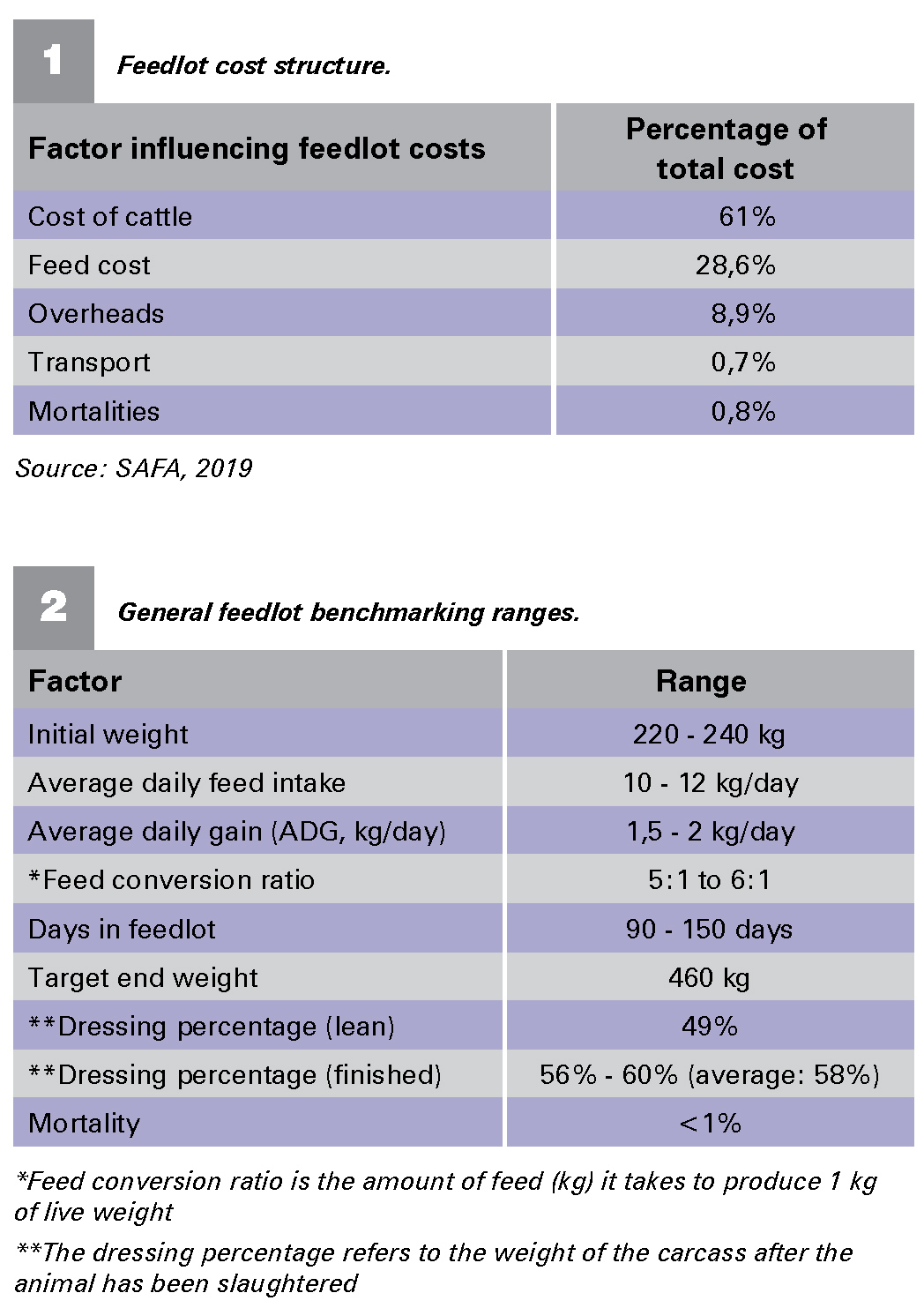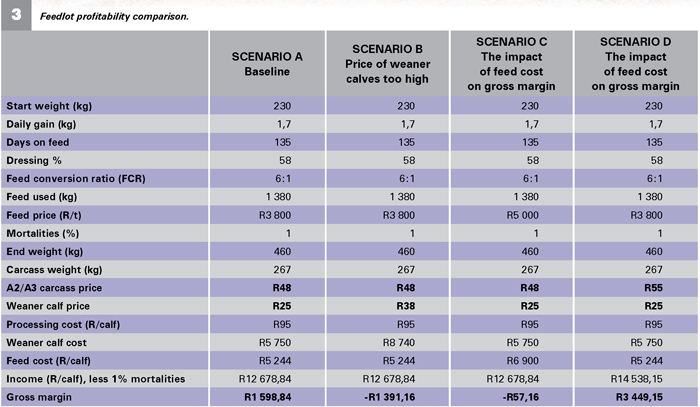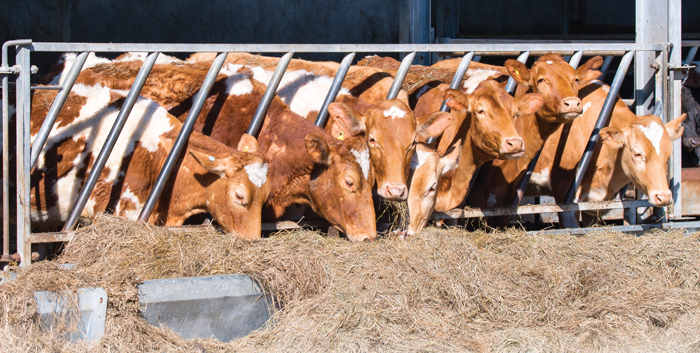April 2021
|
Dr Linde du Toit, senior lecturer: Department of Animal and Wildlife Science at the University of Pretoria and Pietman Botha, agricultural economist. Send an email to pietmanbotha@gmail.com |
 |
The objective for feeding cattle is to make sustainable profit and money. Self-produced calves or bought in calves can be fattened in a feedlot. Small scale and emerging farmers can fatten cattle in pens or larger camps using commercially bought feed or home-grown feeds like maize, soybeans and hay.
Four distinct factors that will influence the profitability of a feedlot are the:
Table 1 shows the industry’s cost structure. Feedlot management influences profitability and cattle performance through its effect on feed intake, weight gain and overall health, General feedlot production targets which will influence the profitability of a feedlot is presented in Table 2.
 BASIC FEEDLOT ECONOMICS
BASIC FEEDLOT ECONOMICS
The profitability calculation of a feedlot operation is based on the price margin, the feed margin and other expenses. Price margin includes the difference between purchase price and selling price of cattle influenced by beef price fluctuations, and improvement in carcass quality due to feeding. The feed margin is defined as the profit or loss made by a feedlot as a result of live mass gain in relation to the cost of feed consumed. The best quality feed at the best price, good management, and the use of growth stimulants can improve the feed margin by achieving optimal growth rates. Other expenses will include abattoir costs and losses, transport, interest on capital, labour and operational costs, processing costs, healthcare and mortalities.
Producers with maize and weaner calves must make the decision whether to sell the weaner and maize or to feed the maize to the calves. Normally the feed needed for a feedlot calf will consist of 73% maize, 12% roughage, and 15% beef fattening concentrate, for example Beef fat 33 from Molatek or SB 100 from Voermol. Normally a 230 kg calf growing up to 460 kg will eat 1 380 kg feed in 150 days.
PRICING CALCULATION EXAMPLE
A producer with a weaner calf of 230 kg at a price of R38/kg. If a dressing percentage of 58% is assumed, it would mean that the producer actually could sell the carcass for R65,52/kg whilst the market price for an A2/A3 carcass is R50,50/kg. This will result in a negative price margin.
Feed margin is calculated as the income from the added carcass weight above the costs to produce the added carcass weight. With a finalised weight of 451kg, the added carcass weight during the 130 days in the feedlot will be 128,20 kg. Using the A2/A3 carcass price of R50,50 the income from the carcass will be R6 474,10.
The feed cost to produce the added carcass weight is calculated by using the weight added during the growth period, feed conversion ratio and the cost of the feed. In this scenario the feed cost will be calculated as 221 kg (added weight) x 6 (FCR of 6:1) x R3,80 (feed cost/kg) = R5 038,80. This will result in a feed margin of R1435,30.
The total gross margin can then be calculated using the following equation: (price margin + feed margin) x the loss factor less other costs like dipping and dosing of about R100 per calf. The loss factor is calculated from the mortality percentage (if the mortality is 1% the loss factors will be 0,99).
In the above scenario, the total gross margin will be a loss of R562,72 per calf. To calculate the net margin, the other expenses including the income from the fifth quarter (skin and tripe) must be included in the calculation. Table 3 gives four examples with varying weaner prices, feed cost and carcass prices.

These scenarios illustrate the sensitivity of a feedlot’s profit. According to information in Table 3 the gross margin for different scenarios may fluctuate. It is important not to pay too much for weaner calves. Producers should make sure that the price of the feed is not too high. Producers must focus on the consumers in order to get a better price. This will have a big impact on the gross margin.
They can do this according to the book, but if the calf feed doesn’t have the potential to grow, the profit will be under pressure. The quality of a calf is important and plays a major role in the profitability of the feedlot – faster, more efficient growing cattle will require less feed and will spend fewer days in the feedlot to achieve the required final weight.
Other rules of thumb

Publication: April 2021
Section: Pula/Imvula